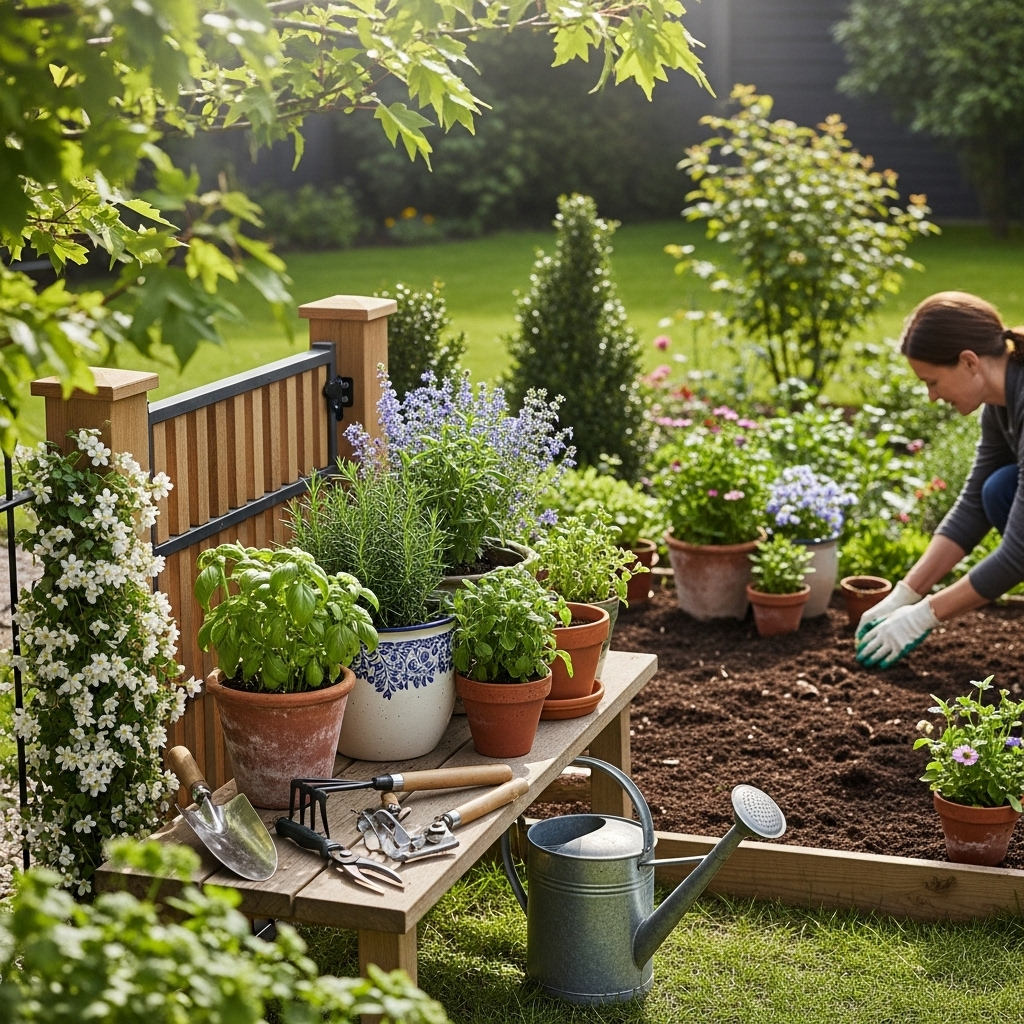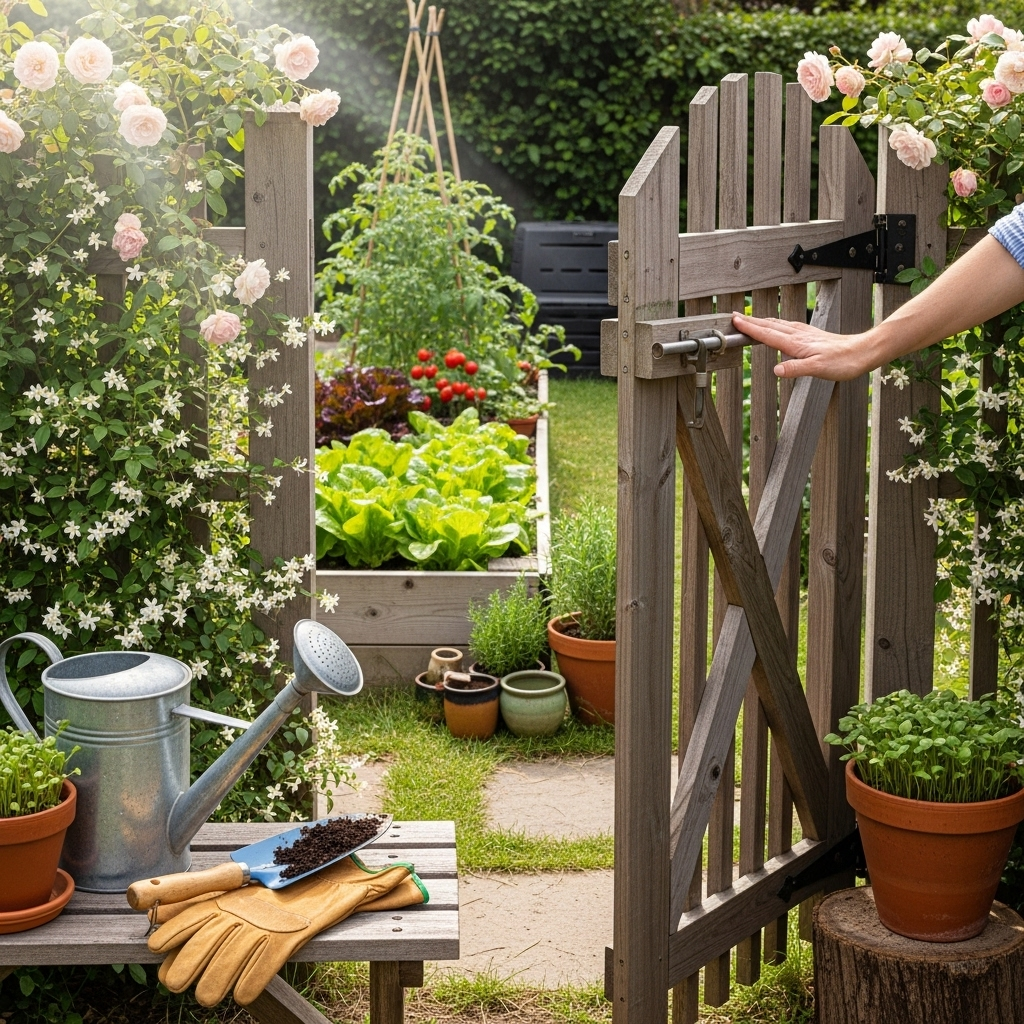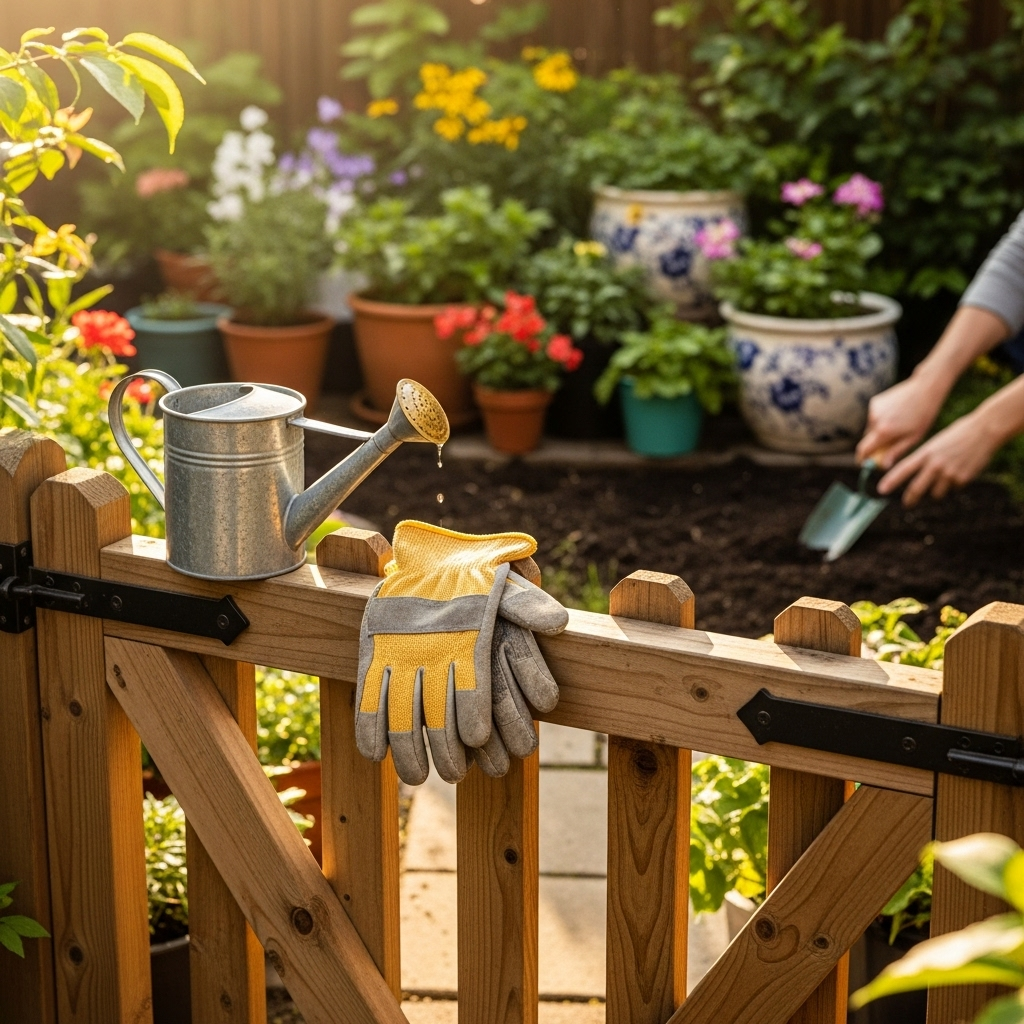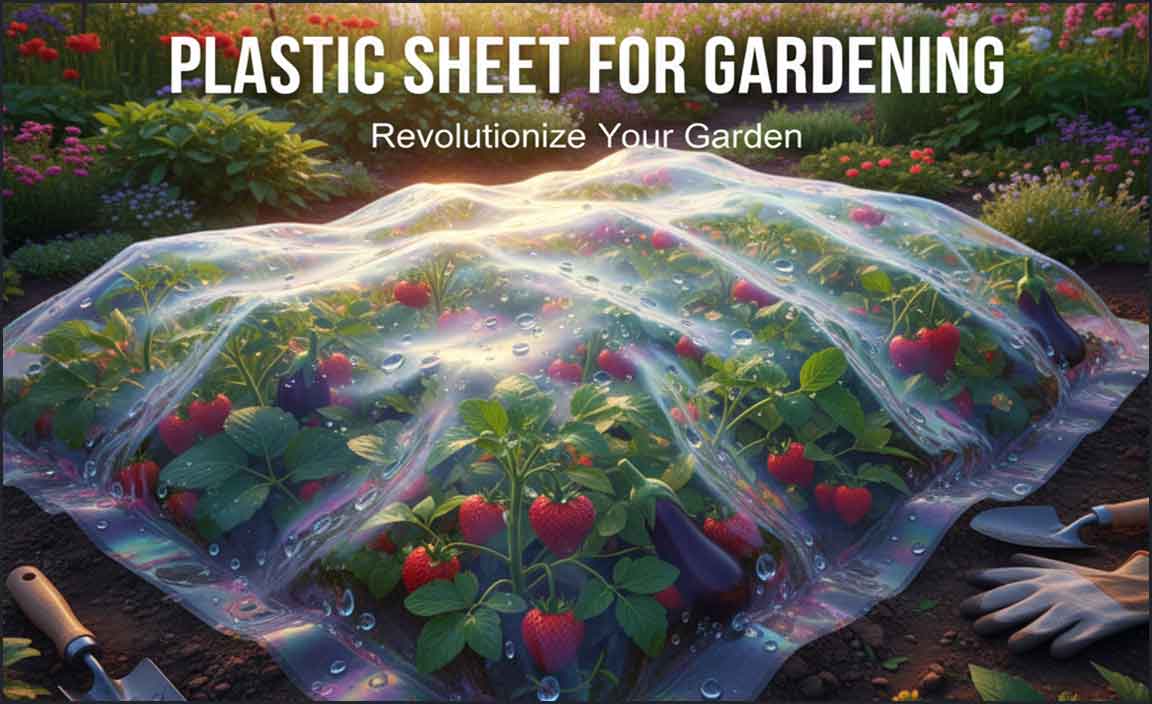Quick Summary:
Choosing the right gate for your outdoor fence is crucial for security, access, and curb appeal. This guide covers essential gate types, materials, and installation tips to help beginners select and implement proven, stylish, and functional solutions for their fences.
Hello gardening friends! Ever feel like your beautiful outdoor fence is missing something? That’s often a gate! A fence gate isn’t just an opening; it’s a welcoming entrance, a security feature, and a key part of your yard’s overall look. Sometimes figuring out the best gate can feel a little overwhelming, especially when you’re just starting out. But don’t worry! We’ll walk through everything you need to know, from different styles to easy installation. Get ready to give your fence the perfect finishing touch!
Why the Right Fence Gate Matters
A fence is a great way to define your space, keep pets or little ones safe, and add a touch of charm. But without a good gate, it’s incomplete. Think of your fence gate as the handshake of your property – it’s the first impression and the primary point of entry. A poorly chosen or installed gate can be a headache, making access difficult, compromising security, or just not looking right with your fence. On the other hand, the perfect gate enhances your fence’s function and beauty, making your garden and yard more enjoyable and accessible.
Understanding the Types of Gates for Outdoor Fences

There’s a whole world of fence gates out there, each with its own benefits. For beginners, understanding the basic types will make your decision much easier. We’ll focus on the most common and practical options.
Single Swing Gates
These are the most common and straightforward gates. Operated by hinges on one side, they swing inwards or outwards like a standard door. They’re ideal for narrower openings and where space isn’t an issue for the swing path.
- Pros: Simple to install and operate, widely available, generally more affordable.
- Cons: Requires clear swing space, can be difficult to operate on slopes without special hardware.
Double Swing Gates
When you need a wider opening, like for a driveway or to accommodate larger equipment, double swing gates are the answer. Two gates meet in the middle, each swinging outwards or inwards.
- Pros: Provide wider access, offer a grander visual appeal, can be easier to manage in windy conditions than one large single gate.
- Cons: Requires ample swing space on both sides, installation can be slightly more complex due to the need for a center latch and alignment.
Sliding Gates
These gates move horizontally along a track. They’re fantastic for areas with limited swing space or on sloped properties. They’re a popular choice for modern homes and for added security.
- Pros: Excellent for sloped yards, save swing space, can offer robust security.
- Cons: Require a clear, level path for the gate to slide, can be more expensive and complex to install than swing gates, need a track to run on.
Bi-Fold Gates
A less common but innovative option, bi-fold gates consist of two panels on each side that fold up as the gate opens. They require less swing space than traditional swing gates.
- Pros: Ideal for limited space, faster operation than sliding gates, unique aesthetic.
- Cons: More complex mechanism, can be more expensive, maintenance might be trickier.
Choosing the Right Material for Your Fence Gate
The material of your gate significantly impacts its durability, appearance, and maintenance needs. Here’s a look at common choices:
Wooden Gates
Wood offers a classic, natural look that complements many fence styles. It’s a versatile choice that can be painted or stained to match your home and landscape.
- Common Woods: Pine, cedar, redwood, and treated lumber. Cedar and redwood are naturally resistant to rot and insects.
- Pros: Natural beauty, easy to customize (paint/stain), relatively affordable depending on wood type.
- Cons: Requires regular maintenance (sealing, staining) to prevent weathering and rot, can be susceptible to warping or insect damage over time.
Metal Gates
Metal gates are known for their strength, durability, and security. They often feature ornate designs or sleek, modern lines.
- Common Metals: Wrought iron, steel, aluminum. Wrought iron and steel offer robust security, while aluminum is lighter and rust-resistant.
- Pros: Highly durable and strong, low maintenance, can be very secure, wide range of styles from classic to contemporary.
- Cons: Can be more expensive, heavier (especially iron/steel), may require professional installation, can rust if not properly coated (steel/iron). A good powder coating or galvanization process is key.
Vinyl Gates
Vinyl (PVC) gates are a low-maintenance option that mimics the look of wood or other materials but without the upkeep.
- Pros: Extremely low maintenance, resistant to rot, rust, and insects, easy to clean, comes in various colors and styles.
- Cons: Can be less durable against strong impacts than metal, may become brittle in extreme cold over many years, style options can be more limited than wood or metal.
Composite Gates
Made from a blend of wood fibers and plastic, composite materials offer a durable, attractive, and low-maintenance alternative.
- Pros: Durable, resistant to rot and insects, low maintenance, can resemble wood, often made from recycled materials.
- Cons: Can be more expensive than wood, may fade over time, requires specialized fasteners.
Factors to Consider When Selecting Your Gate

Beyond type and material, several other factors play a role in choosing the perfect gate:
Sizing and Clearance
Measure your gate opening accurately! You’ll need to account for the gate itself, plus any posts and hardware. Ensure there’s enough clearance for the gate to swing freely without hitting obstacles. For sliding gates, ensure the track area is clear. A standard pedestrian gate opening is typically 36-48 inches wide.
Hardware and Hinges
The right hardware is crucial for gate function and longevity. Look for durable, weather-resistant hinges, latches, and handles. Options range from simple gravity latches to more secure bolt latches or even electronic openers for driveway gates.
Style and Aesthetics
Your gate should complement your fence and the overall style of your home and landscaping. Consider the design, color, and finish. A classic picket fence looks great with a simple wooden gate, while a modern metal fence might pair well with a sleek, minimalist gate.
Security Needs
If security is a primary concern, opt for sturdy materials like metal or reinforced wood. Consider the type of latch and whether additional security features like a lockable bolt or a way to install a padlock are important.
Budget
Gates can range significantly in price. Wooden gates are often the most budget-friendly, while custom metal or ornate vinyl gates can be pricier. Factor in installation costs as well.
Local Regulations
Before buying or installing, check with your local building department or homeowner’s association (HOA) for any regulations regarding fence and gate height, placement, or style. Some areas have specific rules, especially for front yard fences.
DIY vs. Professional Installation
Installing a fence gate can be a rewarding DIY project for the handy homeowner, but it requires careful planning and execution. For those less experienced or tackling a complex gate, professional installation is often the best route.
DIY Installation: What You’ll Need
If you decide to go the DIY route, gather these essential tools and materials:
- Measuring Tape: For accurate measurements of your opening.
- Level: Crucial for ensuring your gate posts and gate are perfectly vertical and horizontal.
- Post Hole Digger or Shovel: For setting new gate posts.
- Concrete Mix: To secure your gate posts firmly in the ground.
- Drill and Drill Bits: For creating pilot holes and attaching hardware.
- Screwdriver or Wrench Set: Depending on the hardware used.
- Saw: If any adjustments to wood or fencing material are needed.
- Safety Gear: Gloves and safety glasses are a must.
- Gate Kit: Includes the gate, hinges, latch, and often necessary fasteners.
- Gate Posts: Sturdy posts (wood, metal, or vinyl) designed to support the gate.
- Gravel: For drainage at the bottom of post holes.
Basic Steps for Installing a Swing Gate (DIY Friendly)
- Measure and Mark: Accurately measure the width of your gate opening. Mark the locations for your gate posts, ensuring they are plumb (perfectly vertical) and spaced correctly for your gate.
- Dig Post Holes: Dig holes for your gate posts. They should be deep enough to reach below the frost line in your area (typically 1/3 of the post height) and wide enough for concrete. Add a few inches of gravel for drainage. For guidance on post depth, resources like the International Code Council (ICC) provides building code information that impacts construction practices.
- Set Gate Posts: Place your posts in the holes. Use a level to ensure they are perfectly plumb in both directions. Brace them temporarily.
- Pour Concrete: Mix and pour concrete into the holes around the posts, filling them completely. Slope the top of the concrete away from the posts to prevent water accumulation. Let the concrete cure fully (usually 24-48 hours).
- Attach Hinges to Post: Once the concrete is cured, attach the hinges to one of the gate posts. Ensure they are at the correct height and aligned properly.
- Hang the Gate: Carefully lift the gate and attach the hinges to the gate itself. Adjust the hinges so the gate hangs level and operates smoothly, with even gaps around it.
- Install Latch: Position and install the latch mechanism on the opposite gate post and the gate itself, aligning it so the gate closes securely.
- Test and Adjust: Open and close the gate several times to ensure it swings freely and latches correctly. Make any necessary adjustments to hinges or latches.
When to Call a Professional
Consider professional installation if:
- You are installing a large or heavy gate (e.g., double driveway gates).
- Your property has significant slopes or uneven terrain.
- You are unfamiliar with concrete work or structural measurements.
- You are installing automated gate openers.
- You want the assurance of a warranty and a perfect finish.
Maintaining Your Fence Gate for Longevity

Proper care will extend the life of your gate and keep it looking great. Maintenance varies by material:
Wooden Gates
- Clean: Wash with mild soap and water annually.
- Seal/Stain: Reapply sealant or stain every 1-3 years, depending on the climate and product used, to protect against UV rays and moisture.
- Inspect: Check for loose boards, rot, or insect damage regularly.
Metal Gates
- Clean: Wash with soap and water.
- Inspect: Check for rust spots and touch up with rust-inhibiting paint as needed. Ensure protective coatings haven’t chipped.
- Lubricate: Periodically apply lubricant to hinges and moving parts to ensure smooth operation.
Vinyl Gates
- Clean: Wash with mild soap and water.
- Inspect: Check for cracks or damage, though this is rare. Ensure hardware is secure.
Composite Gates
- Clean: Use mild soap and water. Avoid harsh chemicals.
- Inspect: Check for any structural integrity issues or loose fasteners.
Troubleshooting Common Gate Issues
Even with the best care, gates can develop minor issues. Here are a few common problems and simple fixes:
- Gate Won’t Close Properly: This often means the posts have shifted. Check if the gate sagged or the latch isn’t aligning. Adjusting hinges or adding a support can help. Ensure there’s no debris blocking the path.
- It’s Hard to Open/Close: Hinges might be dry or misaligned. Lubricate hinges. If the problem persists, check for ground contact or warping.
- Gate Sagging: This is common with wooden gates. A diagonal brace, often called a “gate brace” or “turnbuckle,” can be installed to pull the sagging corner up.
- Latch Not Engaging: The strike plate on the post might need adjustment. Simply loosen the screws, reposition it, and re-tighten.
Inspiring Gate Designs for Every Style

Beyond functionality, your gate is a decorative element! Here are some ideas:
The Classic Garden Gate
Often made of wood or simple metal, featuring a gentle curve at the top and possibly decorative finials. Perfect for a cottage garden or a path leading to a special spot.
The Modern Geometric Gate
Sleek lines, often crafted from metal or vinyl, with repeating geometric patterns. Complements contemporary homes and minimalist landscaping.
The Rustic Farmhouse Gate
Typically made from weathered wood, perhaps with metal accents like wrought iron hinges or a simple latch. Evokes a charming, countryside feel.
The Ornate Wrought Iron Gate
Intricate scrollwork and detailed patterns. This type of gate makes a grand statement and is ideal for adding elegance and security.
Frequently Asked Questions (FAQs)
Q1: What is the standard width for my fence gate?
For pedestrian access, a standard width is usually between 36 to 48 inches. If you need to accommodate wider items like lawnmowers or wheelbarrows, consider a wider gate, perhaps 48 inches or more.
Q2: How do I prevent my wooden gate from rotting?
Use naturally rot-resistant woods like cedar or redwood if possible. Always ensure good drainage around the gate posts. Apply a high-quality sealant or stain regularly (every 1-3 years) to protect the wood from moisture and UV damage.
Q3: Can I install a gate on a sloped yard?
Yes! For sloped yards, sliding gates are an excellent option as they move along a track. Alternatively, some swing gates can be adapted with specialized hardware that compensates for the slope, allowing the gate to maintain a level position as it opens.
Q4: What’s the difference between a gate latch and a gate lock?
A gate latch is designed to keep the gate closed during normal use, often with a simple mechanism that can be easily opened from one or both sides. A gate lock, on the other hand, is specifically for security and typically requires a key or padlock to operate, preventing unauthorized access.
Q5: How much maintenance does a metal gate require?
Metal gates are generally low maintenance. Regular cleaning with soap and water is usually sufficient. For steel or iron gates, you’ll want to inspect for any signs of rust and touch up with appropriate paint to maintain the protective coating. Aluminum gates are naturally rust-resistant.
Q6: Do gate posts need to be set in concrete?
For most types of gates, especially those that are frequently used or are on the heavier side, setting posts in concrete is highly recommended. Concrete provides a strong, stable foundation that prevents the posts from shifting or leaning over time, ensuring your gate operates smoothly and safely.
Conclusion
Choosing and installing the right gate for your outdoor fence is a rewarding step towards a more functional, secure, and beautiful yard. Whether you opt for the classic charm of wood, the lasting strength of metal, or the low-maintenance appeal of vinyl, there’s a perfect solution for every home and every gardener. By understanding the different types, materials, and installation considerations, you can confidently select a gate that not only serves its purpose but also enhances the overall aesthetic of your outdoor space. Remember to consider your specific needs, from access width to security, and don’t hesitate to consult a professional if a project feels too daunting. Happy gardening and safe entrances!

